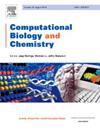Using a dual immunoinformatics and bioinformatics approach to design a novel and effective multi-epitope vaccine against human torovirus disease
IF 2.6
4区 生物学
Q2 BIOLOGY
引用次数: 0
Abstract
Human Torovirus (HToV), a member of the Coronaviridae family, causes severe enteric diseases with no specific medication available. To develop novel preventative measures, we employed immunoinformatics techniques to design a multi-epitope-based subunit vaccine (HToV-MEV) triggering diverse immune responses. We selected non-allergenic, non-toxic, and antigenic epitopes from structural polyproteins, joined them with suitable linkers, and added an adjuvant 50S ribosomal L7/L12 peptide. The vaccine's solubility score of 0.903678 and physiochemical properties were found effective. Molecular dynamics simulations and free energy calculations revealed strong binding affinity for Toll-like receptor 3 (TLR-3), with a lowest energy score of −303.88, indicating high affinity. In-silico cloning and codon optimization showed significant production potential in E. coli. Immune simulations predicted a human immunological response. Our results are promising, but subsequent in vivo research is recommended. The HToV-MEV vaccine design demonstrates potential for preventing HToV-related diseases, and further investigation is warranted to explore its therapeutic applications.
利用免疫信息学和生物信息学双重方法设计新型、有效的多表位人类托罗病毒病疫苗
人类托罗病毒(HToV)是冠状病毒科的一种病毒,可引起严重的肠道疾病,目前尚无特效药物。为了开发新的预防措施,我们采用免疫信息学技术设计了一种基于多表位的亚单位疫苗(HToV-MEV),可引发多种免疫反应。我们从结构多蛋白中选择了非过敏性、无毒性和抗原性表位,用合适的连接体将它们连接起来,并添加了佐剂 50S 核糖体 L7/L12 肽。该疫苗的溶解度得分为 0.903678,其理化性质也十分有效。分子动力学模拟和自由能计算显示,该疫苗与 Toll 样受体 3(TLR-3)有很强的结合亲和力,最低能量得分为 -303.88,表明该疫苗具有很高的亲和力。在大肠杆菌中进行的内嵌克隆和密码子优化显示了巨大的生产潜力。免疫模拟预测了人类的免疫反应。我们的结果很有希望,但建议进行后续的体内研究。HToV-MEV疫苗设计展示了预防HToV相关疾病的潜力,我们有必要进一步研究其治疗应用。
本文章由计算机程序翻译,如有差异,请以英文原文为准。
求助全文
约1分钟内获得全文
求助全文
来源期刊

Computational Biology and Chemistry
生物-计算机:跨学科应用
CiteScore
6.10
自引率
3.20%
发文量
142
审稿时长
24 days
期刊介绍:
Computational Biology and Chemistry publishes original research papers and review articles in all areas of computational life sciences. High quality research contributions with a major computational component in the areas of nucleic acid and protein sequence research, molecular evolution, molecular genetics (functional genomics and proteomics), theory and practice of either biology-specific or chemical-biology-specific modeling, and structural biology of nucleic acids and proteins are particularly welcome. Exceptionally high quality research work in bioinformatics, systems biology, ecology, computational pharmacology, metabolism, biomedical engineering, epidemiology, and statistical genetics will also be considered.
Given their inherent uncertainty, protein modeling and molecular docking studies should be thoroughly validated. In the absence of experimental results for validation, the use of molecular dynamics simulations along with detailed free energy calculations, for example, should be used as complementary techniques to support the major conclusions. Submissions of premature modeling exercises without additional biological insights will not be considered.
Review articles will generally be commissioned by the editors and should not be submitted to the journal without explicit invitation. However prospective authors are welcome to send a brief (one to three pages) synopsis, which will be evaluated by the editors.
 求助内容:
求助内容: 应助结果提醒方式:
应助结果提醒方式:


